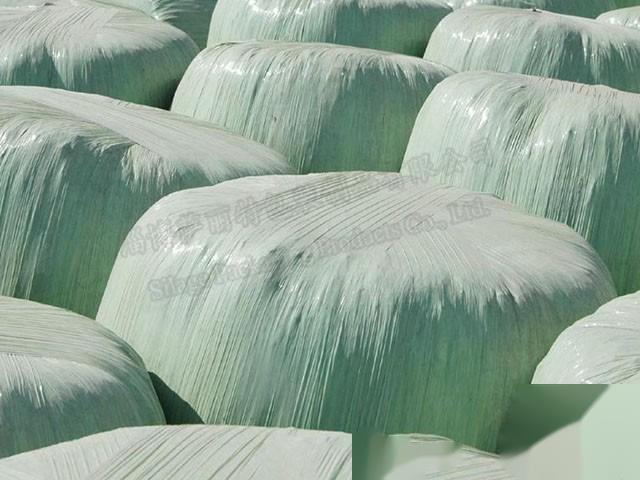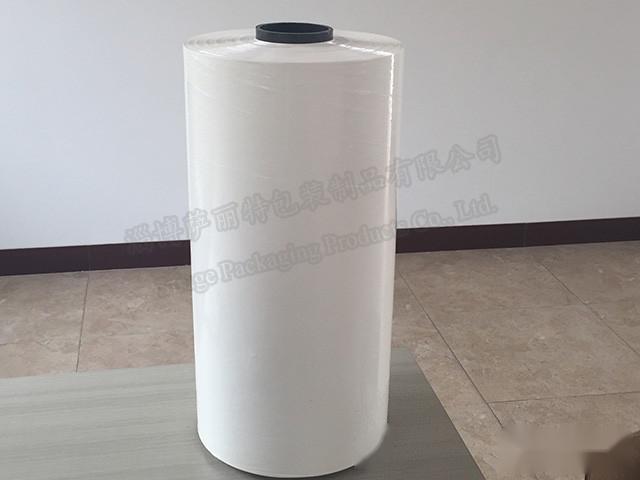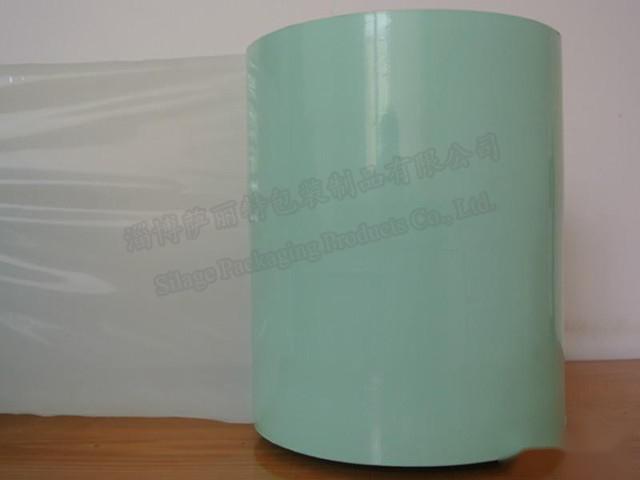Product Content
Category
Other Products-Other Products
The silage film technology for forage is currently the most advanced silage technology. "Baling and wrapping" refers to the process of chopping harvested corn stalks, fresh forage, and other green plants, then compressing and baling them tightly using a baler. After that, the bales are wrapped with silage plastic stretch film, creating a sealed fermentation environment. Under anaerobic conditions, a natural lactic acid fermentation biochemical process is completed in 3-6 weeks. The finished product has an increased crude protein content, a reduced pH value, and an increased total soluble sugar content, leading to improved livestock intake.
Forage silage film is a functional film that helps retain the nutritional components of plants such as grass, corn, grains, and vegetables while preventing mold. This film can be directly used as packaging for the aforementioned plants or made into bags for packaging, as well as serving as a cover film for fresh grass, hay, and grains.
As a packaging product of the most advanced silage feed technology, forage silage film has been widely used in Europe, America, Australia, and other countries and regions, with over a decade of mature experience. Our company has introduced an advanced German multi-layer co-extrusion blown film production line and developed forage film using imported linear low-density polyethylene and metallocene polyethylene as the main materials. It is produced using a unique formula and process, resulting in a five-layer co-extruded blown film.
Forage silage film is typically available in three colors: white, black, and green.
Product specifications: Specific specifications can be negotiated, and customization services are provided.
Advantages of forage silage film:
1. Low cost, quick results, and high overall benefits.
2. Good quality of silage feed. The stretch film wrapping creates a good seal, enhancing the quality of the anaerobic fermentation environment for lactic acid bacteria, improving feed nutritional value, with high crude protein content, low crude fiber content, high digestibility, good palatability, and pleasant aroma, significantly improving the quality and yield of livestock meat and milk.
3. Minimal losses and waste, with greatly reduced mold losses and feeding losses. Traditional silage losses can reach 20%-30%.
4. Long storage freshness period. The compacted sealing is effective, unaffected by seasons, sunlight, rainfall, and groundwater levels, allowing for open-air storage for 2-3 years.
5. Convenient storage and easy feeding.
6. Environmentally friendly and pollution-free. Due to excellent sealing performance, there is no leakage of liquid juice. The packaging is appropriate, compact, and dense, making it easy to transport and commercialize, ensuring a balanced supply of modern livestock silage feed for large, medium, and small dairy farms, beef farms, goat farms, and farmers throughout the year.
Characteristics of Sarit forage silage film:
1. Excellent mechanical properties.
2. Protection level up to 180KLY, effectively preventing damage from sunlight, especially ultraviolet rays, ensuring low light transmission and avoiding heat accumulation.
3. Consistent quality and thickness, with a good 25-micron thickness distribution in the film.
4. Good stretching performance (even in warm weather and cold winters).
5. No holes present when stretched.
6. Good bonding seal between layers.
7. Strong puncture resistance and excellent impact resistance.
8. Maintains mechanical properties for over a year even when stored outdoors.
9. Good sealing that blocks oxygen, air, and moisture penetration.
10. High load retention (for packaging integrity).
11. Ensures customers benefit from high-quality film standards, including attributes such as UV resistance, puncture resistance, adhesion, and stretch (55-70%), including thickness.
12. Specified attributes ensure the film performs well during packaging, protecting and conserving feed.
13. Specifically designed for efficient forage packaging, saving valuable time for long-term performance.
14. The silage film provides tightness in all three dimensions for forage bales, meaning "forage bales" have more consistent strength and rigidity, allowing for much higher stacking of forage bales as they better maintain their shape.





